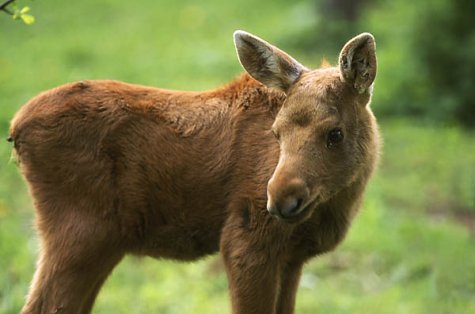Elk calves' story
Photo: Arne Ader
Translation: Liis
Elk calf
Elk; Moose (N. America) Põder Alces alces
The elk calves born this year have already been seen in our forests since early May. The elk cow sends last year’s progeny off in winter before giving birth. The year-old young animals have to manage for themselves now. Spring and early summer are the periods when inexperienced elks stray into human developments. They look for suitable territories for themselves, so crossing roads; sometimes, because of heavy traffic, the animals can’t get back to their familiar woods any more, lose their orientation – and so all kinds of messes and mischief can happen ...
Young elk cows up a few years old mostly have one calf. With age, one to two calves can be born, rarely three. The weight of the newly born is between 6 and 16 kilos.
They have light brown fur and are quite enterprising. In addition to mother’s milk they at once begin to nibble grass as well.
If you happen to meet an elk calf in nature it is wise to back off. The mother often leaves her „baby“ alone to rest and only visits to suckle it, before the calf is sturdy enough to go along with her. So, a calf on its own should not be seen as being an orphan or rejected. Big animals know their territories well, including the dangers and enemies there.
Russia has had elk farms for decades, and thus the nutritional value of elk milk has been studied: in May-June the fat content of the milk is 8-13% and the protein content 12-16%. On milk packages numbers for comparison can be found.
Depending on its age, a calf needs up to a couple of litres of milk per day and it sucks until autumn. In late autumn the calves already weigh quite a bit more than a hundred kilos.









